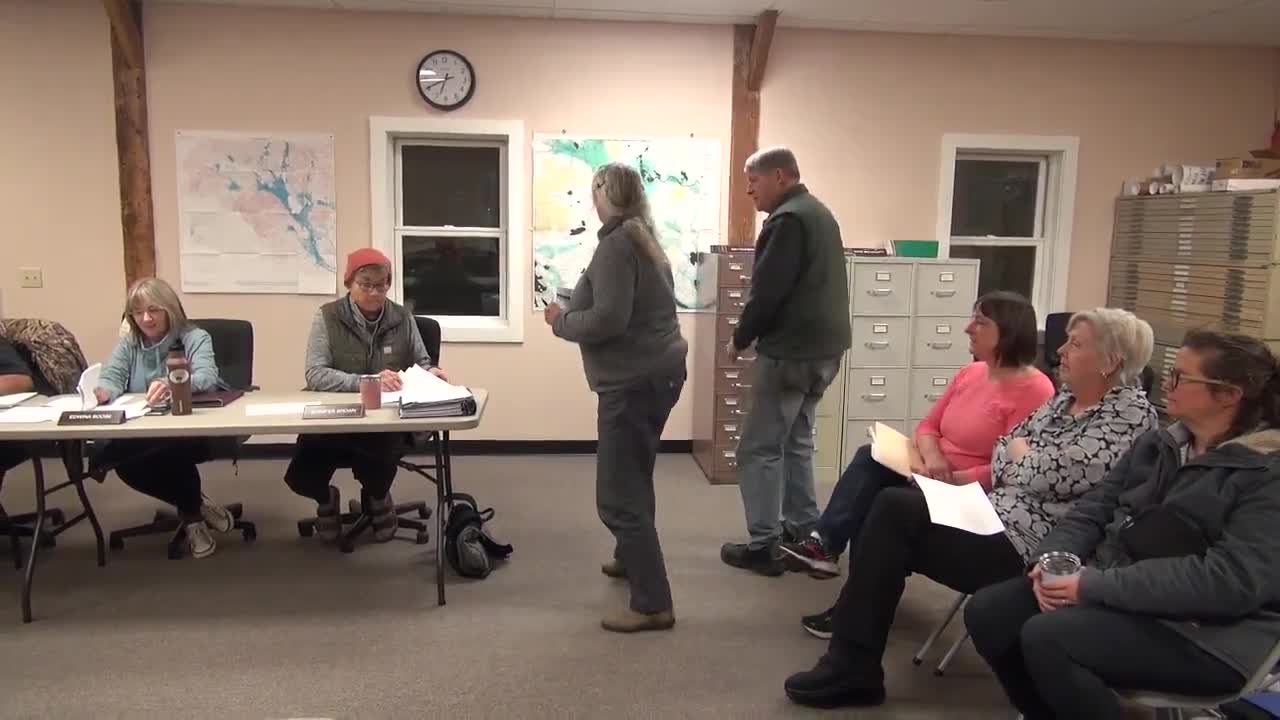Green Mountain Conservation urges continued lake protections, highlights chloride and phosphorus concerns
November 07, 2025 | Ossipee Town, Carroll County, New Hampshire
This article was created by AI summarizing key points discussed. AI makes mistakes, so for full details and context, please refer to the video of the full meeting. Please report any errors so we can fix them. Report an error »

Nancy Licker, executive director (presented with Bob Pastel), told the committee Green Mountain Conservation seeks $2,500 to support water-quality monitoring and education programs that reach students and homeowners in Ossipee and six neighboring towns.
"We reach between 30 and 45 students directly in Ossipee," Licker said, and said monitoring work focuses on parameters that indicate lake health. She told the committee chloride — road salt — is a growing concern because it accumulates in lake water, and phosphorus is tied to cyanobacteria (harmful algal) blooms. "Chloride is an issue, and that is salt, from road salt," Licker said. "The other aspect is phosphorus, and that is behind a lot of those cyanobacteria blooms."
Committee members asked whether the group monitors milfoil and about coordination with the Ossipee Lake Alliance. Licker said the conservation group focuses on water quality testing and education and that aquatic invasive-species monitoring (milfoil) is better handled by volunteer boat-inspection programs and partner groups. She said the organization is piloting a SALT Responsibly outreach program to work with town road departments and homeowners on salt reduction and brining best practices.
Select Board members expressed interest in the SALT Responsibly seminars and asked staff to encourage interagency presentations (selectmen, conservation commission, public works) to explore whether municipal practices can reduce chloride loads. Licker said brining and reduced salt use can lower chloride concentrations but that long-term attention is required to see improvements in lake chemistry.
The committee did not take a formal vote on the conservation request at the meeting; members said they would consider the $2,500 request as part of the outside-agency allocations.
"We reach between 30 and 45 students directly in Ossipee," Licker said, and said monitoring work focuses on parameters that indicate lake health. She told the committee chloride — road salt — is a growing concern because it accumulates in lake water, and phosphorus is tied to cyanobacteria (harmful algal) blooms. "Chloride is an issue, and that is salt, from road salt," Licker said. "The other aspect is phosphorus, and that is behind a lot of those cyanobacteria blooms."
Committee members asked whether the group monitors milfoil and about coordination with the Ossipee Lake Alliance. Licker said the conservation group focuses on water quality testing and education and that aquatic invasive-species monitoring (milfoil) is better handled by volunteer boat-inspection programs and partner groups. She said the organization is piloting a SALT Responsibly outreach program to work with town road departments and homeowners on salt reduction and brining best practices.
Select Board members expressed interest in the SALT Responsibly seminars and asked staff to encourage interagency presentations (selectmen, conservation commission, public works) to explore whether municipal practices can reduce chloride loads. Licker said brining and reduced salt use can lower chloride concentrations but that long-term attention is required to see improvements in lake chemistry.
The committee did not take a formal vote on the conservation request at the meeting; members said they would consider the $2,500 request as part of the outside-agency allocations.
View full meeting
This article is based on a recent meeting—watch the full video and explore the complete transcript for deeper insights into the discussion.
View full meeting
